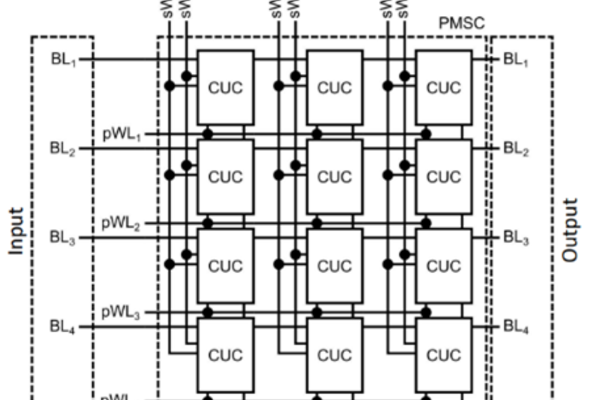Field-programmable analog circuits - Programmable, integrable analog circuit grid
Ref.-No. 6316
Keywords: programmable analog circuits, programmable mixed-signal-circuits, programmable filter, programmable amplifier
Field-programmable analog arrays (FPAAs) can be used for filter and amplifier circuit design. But using conventional FPAAs for analog circuits is not very resource-efficient, so such circuits have relatively narrow bandwidths and long signal propagation delays. FPAAs have therefore rarely been used commercially so far.
The invention from TU Dortmund University describes a device for processing electrical signals that is based on a matrix arrangement of compact conventional unit cells (CUCs) consisting of three programmable circuit elements and one operational component (transistor, capacitor, or resistor). Signals are routed between adjacent CUCs, and the operational component is connected in a space-saving manner, with the circuit elements.
This new FPAA concept can be used to create both analog and digital circuits much more compactly than on printed circuit boards or with FPAA technologies that have been used so far, and more cheaply than with an ASIC. In the future, these FPAAs could play an important role in the areas of artificial intelligence and neural networks, where their flexibility is an especially great advantage.
Competitive Advantages
- Compact circuit design
- Variable, freely configurable circuit design for mixed-signal ICs
- Allows circuits whose wide bandwidths and low signal propagation delays are comparable to ASICs
- Ideal areas of application are small batches of filters and amplifiers, circuits for small installation spaces, and adaptive circuits
Commercial Opportunities
Programmable, integrable analog circuit grids are especially well-suited to electronics development for customer-specific filter, amplifier, and signal generator circuits and circuits for applications with little installation space that are used in measurement technology or the automotive area.
Current Status
The invention has not yet been implemented in hardware, but fundamental technical feasibility for bandwidths extending into the GHz range has been documented with SPICE simulations. A patent application has been submitted to the German Patent and Trade Mark Office. Within the priority year, applications can be submitted abroad. We are offering interested companies the opportunity to license and refine the technology in collaboration with the inventors and TU Dortmund University.
Technology Readiness Level
1
2
3
4
5
6
7
8
9
Experimental proof of concept
Relevant Puclications
Publications are being planned for the second quarter of 2023.
—
An invention of TU Dortmund University.




